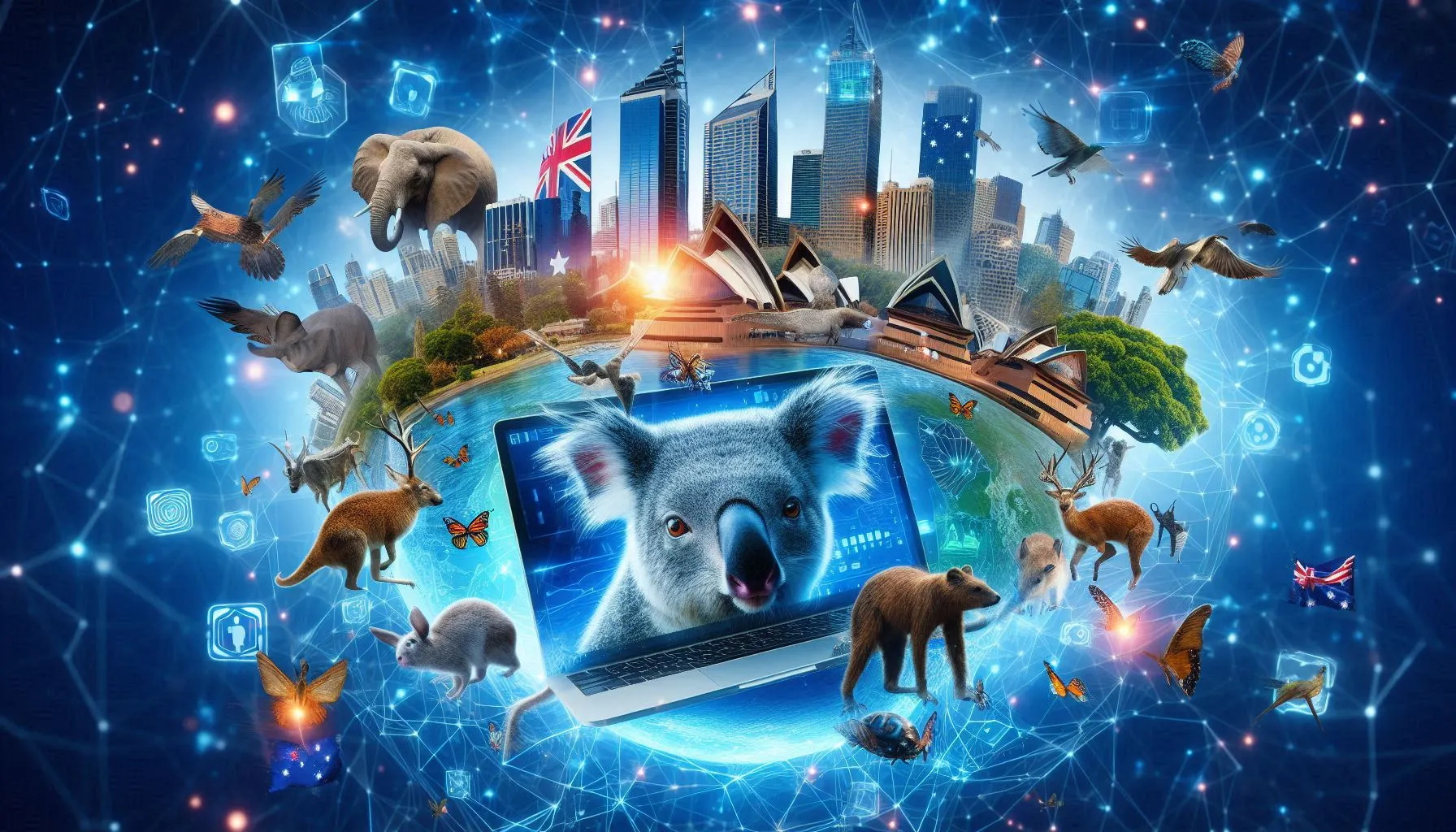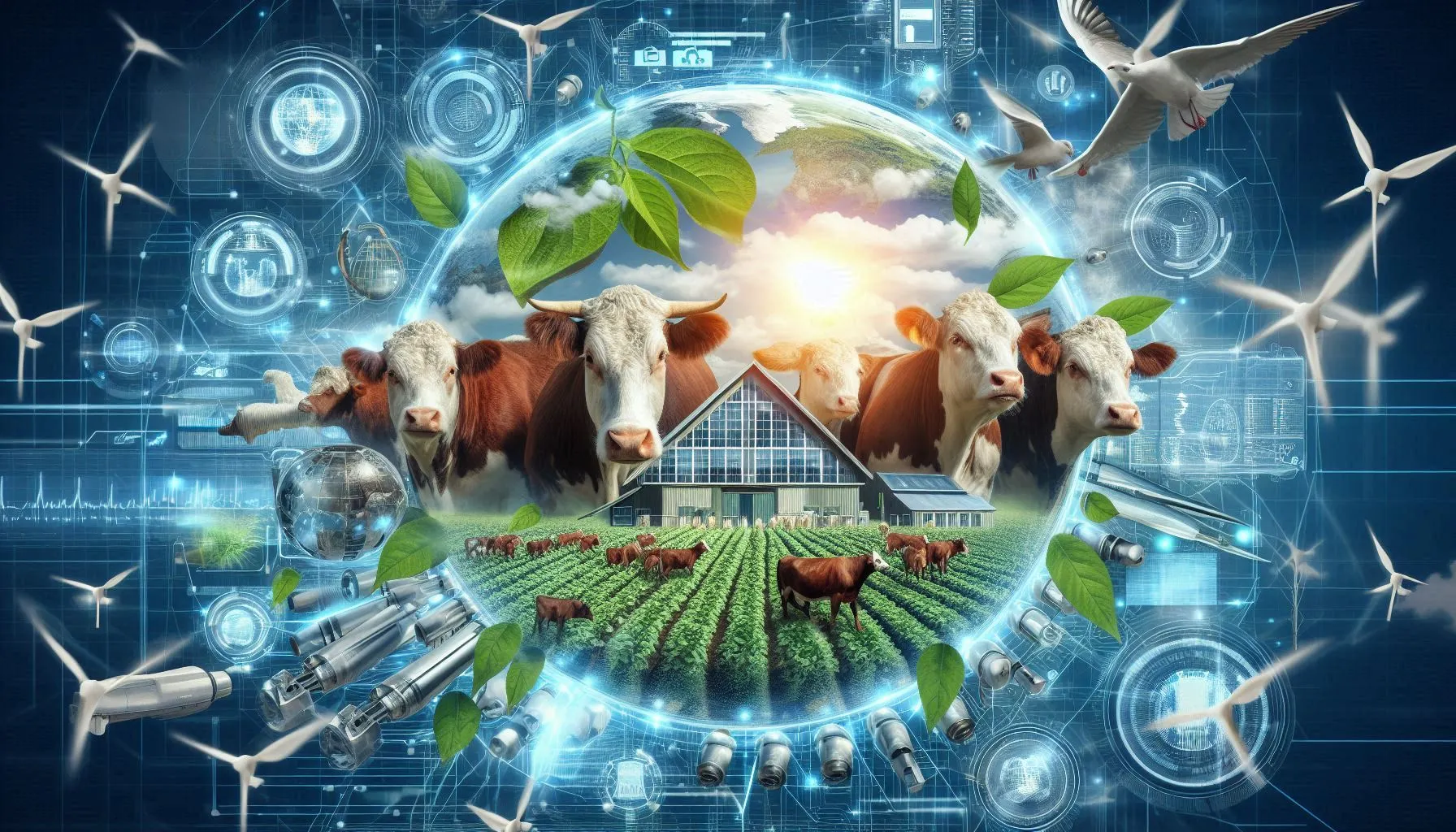The devastating bushfires of 2019-20, which ravaged over 18 million hectares of land and tragically claimed the lives of an estimated 3 billion animals, served as a stark reminder of the interconnectedness of our environment and the urgent need for action. These fires, along with other pressing environmental challenges, have ignited a powerful movement in Australia – a drive towards a more humane economy.
But what exactly is a "humane economy"? It's more than just a trendy buzzword; it represents a fundamental shift in our values, a recognition that our economic systems must prioritise the well-being of all living creatures, not just humans. It's about ensuring that animals, from iconic Australian wildlife like kangaroos and koalas to those in our agricultural systems and shelters, are treated with compassion and respect.
Australians are increasingly demanding ethical and sustainable practices that protect our unique fauna and promote animal welfare. This growing awareness has created a unique opportunity for businesses to step up and become champions of change. At C9, we believe that technology can play a pivotal role in this transformation. Our team of skilled software developers, mobile app developers, integration developers, and database developers are passionate about creating innovative solutions that contribute to a more humane and sustainable future.
In this blog post, we'll delve into how C9's expertise can be harnessed to build a more humane economy for animals and wildlife in Australia. We'll explore how our custom software, apps, integration capabilities, and database solutions can empower organisations to make a real difference in the lives of animals. From protecting endangered species and improving animal welfare on farms to streamlining shelter operations and promoting education and awareness, C9 is committed to providing the technological tools needed to create a brighter future for all living creatures.
Technology's Impact on Wildlife Conservation

Protecting Australia's unique and diverse wildlife is a collective responsibility, and technology is rapidly evolving into a powerful tool in the conservation toolkit. By harnessing the power of custom software, mobile apps, and advanced data analytics, we can revolutionise how we monitor, protect, and preserve our precious fauna.
Monitoring and Tracking: Imagine a system that alerts wildlife rangers in real-time when a tagged endangered animal enters a high-risk zone, such as a fire-prone area or a region with high poaching activity. This is the power of custom software and mobile apps developed by skilled software developers and mobile app developers. By integrating GPS tracking, sensor technology, and sophisticated data analysis, we can empower conservationists with the information they need to make informed decisions and take proactive measures to protect vulnerable species. This technology can be used to analyse migration patterns, identify critical habitats, and monitor the health of animal populations, providing invaluable insights for conservation strategies.
Anti-Poaching Efforts: The illegal wildlife trade poses a significant threat to Australia's biodiversity. To combat this, technology is playing an increasingly important role. AI-powered image recognition software, developed by expert software developers, can analyse surveillance footage to detect suspicious activity, helping to identify and apprehend poachers. Drone technology, integrated with advanced data analytics by integration developers, provides a bird's-eye view of vast and often inaccessible areas, gathering crucial data for analysis and intervention. By leveraging these technologies, we can strengthen anti-poaching efforts and protect our iconic wildlife from this devastating trade.
Habitat Restoration and Management: Protecting and restoring Australia's diverse ecosystems is essential for the survival of our wildlife. Software solutions, designed by talented software developers, can be instrumental in habitat mapping, analysing environmental data, and planning effective conservation strategies. With expertise in data management and analytics, database developers can build systems that empower organisations to make informed decisions about land use, resource allocation, and habitat restoration efforts. This technology can help us understand the impact of climate change on vulnerable species, optimise reforestation projects, and manage natural resources sustainably.
By embracing technology and collaborating with skilled software developers, mobile app developers, integration developers, and database developers, we can unlock new possibilities for wildlife conservation in Australia. These innovative solutions provide the tools and insights needed to protect our unique fauna and ensure a thriving future for generations to come.
Technology in Sustainable Agriculture and Animal Welfare

The agricultural landscape is undergoing a technological revolution, and animal welfare is at the forefront of this transformation. By harnessing the power of sensors, IoT devices, data analytics, and innovative software solutions, we can create a more sustainable and compassionate food system.
Precision Farming and Animal Monitoring: Imagine a system that continuously monitors the health and well-being of livestock, alerting farmers to subtle changes in behaviour or physiology that may indicate distress or illness. This is the potential of precision farming, powered by skilled software developers and integration developers who can integrate sensors and IoT devices to collect real-time data on animal health, behaviour, and environmental conditions. This data can be analyzed to identify patterns and trends, allowing farmers to intervene early and prevent potential health issues. This not only improves animal welfare but also enhances productivity and sustainability.
Supply Chain Transparency: Consumers are increasingly concerned about the origin and ethical treatment of the animals raised for food. Building trust and transparency in the food supply chain is essential. Software developers and database developers can create systems that track animal products from farm to fork, ensuring ethical sourcing and providing consumers with greater confidence in the products they purchase. This technology can also help to reduce food fraud and improve food safety, benefiting both consumers and producers.
Promoting Plant-Based Options: As awareness of the environmental and ethical impact of animal agriculture grows, more and more people are embracing plant-based diets. Mobile app developers can create engaging and informative platforms that promote sustainable and compassionate food choices. These apps can provide delicious recipes, nutritional information, and tips for transitioning to a plant-based lifestyle. By making plant-based options more accessible and appealing, we can contribute to a more humane and sustainable food system.
Technology is empowering farmers, producers, and consumers to make more informed choices that benefit animal welfare and promote a more sustainable agricultural industry. By collaborating with skilled software developers, mobile app developers, integration developers, and database developers, we can create a food system that prioritises the well-being of animals and the health of our planet.
Streamlining Animal Shelter Operations

In the heart of Australia's animal welfare landscape lies a network of dedicated animal shelters, working tirelessly to provide care and find loving homes for animals in need. Technology is transforming how these shelters operate, offering innovative solutions to streamline processes, improve animal welfare, and increase efficiency.
Shelter Management Software: Managing the day-to-day operations of an animal shelter is a complex task, involving animal records, medical histories, adoption applications, volunteer coordination, and fundraising efforts. Custom software, developed by experienced software developers, can revolutionise how shelters manage this information. Imagine a centralised system that tracks each animal's journey from intake to adoption, providing a comprehensive overview of their medical needs, behavioural traits, and adoption progress. This not only improves efficiency but also enables better care and informed decision-making.
Adoption Apps: Connecting animals with their forever homes is the ultimate goal of any shelter. User-friendly adoption apps, designed by skilled mobile app developers, can play a crucial role in this process. These apps can showcase adoptable animals, provide detailed profiles, and facilitate virtual meet-and-greets between potential adopters and their furry companions. By streamlining the adoption process and making it more accessible, we can increase the chances of successful matches and happy endings.
Volunteer Management and Fundraising: Volunteers are the backbone of many animal shelters, and efficient volunteer management is essential. Technology can optimise volunteer scheduling, matching skills and availability with specific tasks. Additionally, fundraising efforts can be streamlined through online platforms and integrated systems, making it easier for supporters to donate and contribute to the shelter's mission. Database developers and integration developers play a crucial role in building and maintaining these systems, ensuring that shelters have the resources they need to continue their vital work.
By embracing technology and collaborating with talented software developers, mobile app developers, integration developers, and database developers, animal shelters can enhance their operations, improve animal welfare, and increase their impact. These innovative solutions empower shelters to focus on what matters most – providing exceptional care and finding loving homes for animals in need.
Education and Awareness

In the digital age, technology offers powerful tools for education and awareness, and the realm of animal welfare is no exception. By harnessing the creativity of software developers, mobile app developers, and integration developers, we can engage the public in new and exciting ways, fostering empathy, understanding, and action.
Educational Apps and Platforms: Imagine an interactive app that teaches children about responsible pet ownership, guiding them through the joys and responsibilities of caring for an animal. Or envision an online platform that provides farmers with access to the latest research and best practices in animal welfare, empowering them to make informed decisions that benefit both their animals and their business. These are just a few examples of how educational apps and platforms, crafted by skilled software developers, can promote animal welfare.
Interactive Campaigns and Gamification: Raising awareness and inspiring action often requires innovative approaches that capture the public's attention. Gamification, the application of game-design elements and game principles in non-game contexts, can be a powerful tool for engagement. Imagine a mobile game that challenges players to make ethical choices regarding animal welfare, or an interactive campaign that uses augmented reality to bring animal welfare issues to life. By leveraging the expertise of mobile app developers and integration developers, we can create compelling experiences that educate and inspire.
Virtual Reality (VR) and Augmented Reality (AR): VR and AR technologies offer immersive and engaging ways to connect with the world around us. In the context of animal welfare, these technologies can create empathy and understanding by allowing users to experience the world from an animal's perspective. Imagine a VR experience that immerses users in the life of a rescued kangaroo, or an AR app that overlays information about endangered species onto real-world environments, encouraging users to learn more about the challenges they face.
By embracing these technological advancements and collaborating with talented software developers, mobile app developers, and integration developers, we can create a more informed and compassionate society. Education and awareness are vital steps towards building a more humane future for animals, and technology is providing the tools we need to make a lasting impact.
Conclusion
The journey towards a humane economy for animals and wildlife is paved with innovation, compassion, and the transformative power of technology. From the depths of our oceans to the vast Australian outback, technology is reshaping how we protect endangered species, improve animal welfare on farms, streamline shelter operations, and educate the public.
Software developers, mobile app developers, integration developers, and database developers are at the forefront of this movement, crafting the tools and solutions that empower organisations to make a real difference. Custom software and mobile apps are revolutionising wildlife conservation, enabling real-time monitoring of endangered species, combating poaching, and facilitating habitat restoration. In agriculture, technology is enhancing animal welfare through precision farming, promoting transparency in the supply chain, and encouraging sustainable food choices. Animal shelters are leveraging technology to streamline operations, connect animals with loving homes, and optimise volunteer and fundraising efforts. And through educational apps, interactive campaigns, and immersive experiences, technology is raising awareness and fostering empathy for animals across the globe.
The future of animal welfare and wildlife conservation is brimming with potential, driven by the ingenuity of those who dedicate their skills to building a more humane world. As we continue to embrace technology and its transformative power, we can create a future where animals are treated with compassion, respect, and dignity.

Are you passionate about building a more humane economy for animals? Learn more about C9's services and how we can help your organisation contribute to the cause. Contact us today for a free consultation.
C9: The Brand You Can Trust
Website: https://www.c9.com.au/
Let's work together to build a more humane future for animals and wildlife.
References:
- IN-DEPTH: AUSTRALIAN BUSHFIRES
- RSPCA Australia. (2024). Animal Welfare in Australia Annual Report
- Australian Wildlife Conservancy. (2024). Technology in Conservation.
- National Environmental Science Program
Explore Our Software Development Insights
Dive into our collection of in-depth articles covering the latest trends, best practices, and expert tips in software development. From coding techniques to architecture patterns, discover valuable insights to enhance your development journey.
Building a Humane Economy for Animals & Wildlife: The Role of Software and Technology
Top 15 Desktop Software Development FAQs Answered by C9
Custom Bespoke Software Development for Agriculture & Farming in Australia
Building a Future-Proof Business with Scalable Bespoke Software Development
5 Ways Bespoke Software Can Solve Your Inventory Management Headaches
System and App Integration FAQs Answered by C9 Software
Software Development FAQ answered by C9
The ROI of Custom Software Development: A Guide for Australian Businesses
Beyond the Build: Tips & Tricks to Maximise Efficiency with Custom Software (Australian Businesses)
Scaling with Confidence: Future-Proof Your Business with Scalable Software
AI-Powered Bespoke Software: Building the Future, One App at a Time
Reduce Operational Costs with Custom Logistics Software
5 Ways Custom Software Can Improve Your Retail Business
Avoiding Skill Stagnation with Outsourced Software Partners
The True Hourly Cost of Inhouse vs Outsourced Software Development Team
What are the Benefits and Drawbacks of Inhouse and Outsourcing Software Development Project Management & Administration?
What You Need to Know About Insourced vs Outsourced Software Development Services
Understand the Advantages and Disadvantages of Internal vs. External Software Development for Business Analysis
Modernise Antiquated Business Software Before It's Too Late
Custom Software Development: The Secret Weapon to Boost Your Business's Success
Protecting Your Business from Mother Nature's Fury: A Guide to Business Continuity Planning for Australian Businesses
Empower Your Team: Citizen Developers and the Rise of Low-Code/No-Code in Australia
Custom Software Development Brisbane | C9
Desktop Software Development Service in Brisbane | C9
Custom Desktop Software Development Melbourne | C9
Custom Web & Software Development Services in Sydney
Custom Software Development Sydney | C9
Custom Desktop Software Development Sydney | C9
Custom Software Development Melbourne | C9